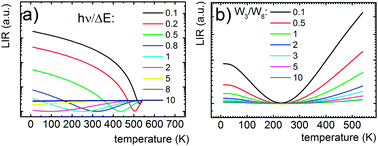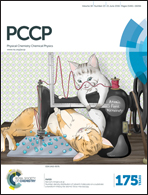The influence of dopant concentration on temperature dependent emission spectra in LiLa1−x−yEuxTbyP4O12 nanocrystals: toward rational design of highly-sensitive luminescent nanothermometers†
Abstract
Luminescence nanothermometry is gaining great interest, and different excitation and readout schemes have been sought to improve temperature sensitivity and sensing range, or to simplify the readout. Although many up-conversion based nanothermometers have been studied, Tb3+ and Eu3+ doped systems have not been widely considered, so far. Herein, we report the synthesis of new LiLa1−x−yEuxTbyP4O12 nanocrystals for luminescent thermal sensing; their spectroscopic properties have been investigated in a wide range of compositions and temperatures. In particular, the impact of dopant concentration on energy transfer processes (such as energy transfer, back energy transfer, energy diffusion and cross relaxation) is presented in a quantitative manner, both experimentally and theoretically, which enables the intentional optimization of the composition to find the finest balance between temperature sensitive excitation and depletion phenomena, and thus, enhance the luminescent thermometry properties. The studied thermometers can be applied in as wide a temperature range as 77–600 K, where they demonstrate sensitivity up to 1% K−1, which is the highest among the Tb3+ and Eu3+ doped inorganic phosphor based materials, to date.



 Please wait while we load your content...
Please wait while we load your content...